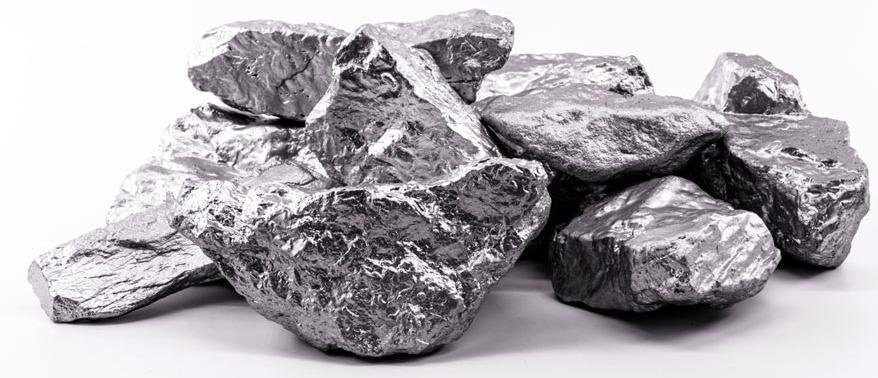Reviewed by Alex SmithAug 18 2021
A new kind of catalyst developed by researchers would pave the way for the advanced and sustainable approaches of creating and utilizing molecules and protecting the supply of valuable metals.

Image Credit: University of Nottingham.
University of Nottingham researchers developed the new catalyst that integrates features that were earlier assumed to be mutually exclusive. They also created a process to fabricate nanoclusters of metals on a mass scale.
The new study shows that the behavior of nanoclusters of palladium does not match the orthodox characteristics that outline catalysts as either homogeneous or heterogeneous. The study was recently reported in the Nature Communications journal.
Conventionally, catalysts are divided into either homogeneous, where catalytic centers are closely mixed with reactant molecules, or heterogeneous, where reactions occur on the surface of a catalyst.
Chemists, in general, should be ready to make compromises while selecting one type or another, as homogeneous catalysts are more active and selective, and heterogeneous catalysts are more lasting and reusable.
Yet, the nanoclusters of palladium atoms seem to disobey the conventional categories, as shown by an investigation of their catalytic behavior in the reaction of cyclopropanation of styrene.
Almost 80% of the industrial chemical processes that provide the most essential ingredients of the economy, right from materials (like polymers) and pharmaceuticals all through to agrochemicals such as fertilizers and crop protection, are enabled by catalysts. The heavy demand for catalysts implies that worldwide supplies of several useful metals, such as palladium, gold and platinum, are turning out to be depleted quickly.
The difficulty is to make use of each-and-every atom to its highest potential. The use of metals in the form of nanoclusters is considered as one of the robust approaches for increasing the active surface area that is available for catalysis.
Furthermore, when nanocluster dimensions tend to break through the nanoscale, there is a significant change in the properties of the metal, which results in a new phenomenon that is unachievable at the macroscale.
The researchers employed analytical and imaging methods to investigate the dynamics, structure and chemical properties of the nanoclusters to unravel the inner workings of this strange catalyst at the atomic level.
The breakthrough achieved by the researchers holds the key to unravel the full potential of catalysis in chemistry. This paves the way for new approaches to making and utilizing molecules in the most energy-resilient and atom-efficient ways.
We use the most direct way to make nanoclusters, by simply kicking out the atoms from bulk metal by a beam of fast ions of argon—a method called magnetron sputtering. Usually, this method is used for making coatings or films, but we tuned it to produce metal nanoclusters that can be deposited on almost any surface.
Dr. Jesum Alves Fernandes, Study Lead Researcher and Propulsion Futures Beacon Research Fellow, School of Chemistry, University of Nottingham
“Importantly, the nanocluster size can be controlled precisely by experimental parameters, from single atom to a few nanometres, so that an array of uniform nanoclusters can be generated on demand within seconds,” added Fernandes.
Dr. Andreas Weilhard, a Green Chemicals Beacon postdoc researcher in the team added, “Metal clusters surfaces produced by this method are completely ‘naked’, and thus highly active and accessible for chemical reactions leading to high catalytic activity.”
This method of catalyst fabrication is important not only because it allows the most economical use of rare metals, but it does it the cleanest way, without any need for solvents or chemical reagents, thus generating very low levels of waste, which is an increasingly important factor for green chemical technologies.
Peter Licence, Professor and Director, GSK Carbon Neutral Laboratory, University of Nottingham
The University is all set to start a large-scale project to extend on this work, which will result in the safety of threatened elements. “Metal Atoms on Surfaces and Interfaces (MASI) for Sustainable Future” is financially supported by the Engineering and Physical Sciences Research Council (EPSRC) and will be launched at four UK universities (Nottingham, Cambridge, Birmingham, and Cardiff).
Our project is set to revolutionize the ways metals are used in a broad range of technologies, and to break our dependence on critically endangered elements. Specifically, MASI will make advances in: the reduction of carbon dioxide (CO2) emissions and its valorization into useful chemicals; the production of “green” ammonia (NH3) as an alternative zero-emission fuel and a new vector for hydrogen storage; and the provision of more sustainable fuel cells and electrolyzer technologies.
Andrei Khlobystov, Study Principal Investigator and Professor, Metal Atoms on Surfaces & Interfaces
Metal nanoclusters have been triggered for reactions with molecules that can be stimulated by heat, electric potential or light while tunable interactions with support materials offer reusability and durability of catalysts.
Especially, MASI catalysts will be employed for activating hard-to-crack molecules (for example, H2, N2 and CO2) in reactions that form the backbone of the chemical industry, like the Haber-Bosch process.
Journal Reference:
Cano, I., et al. (2021) Blurring the boundary between homogenous and heterogeneous catalysis using palladium nanoclusters with dynamic surfaces. Nature Communications. doi.org/10.1038/s41467-021-25263-6.